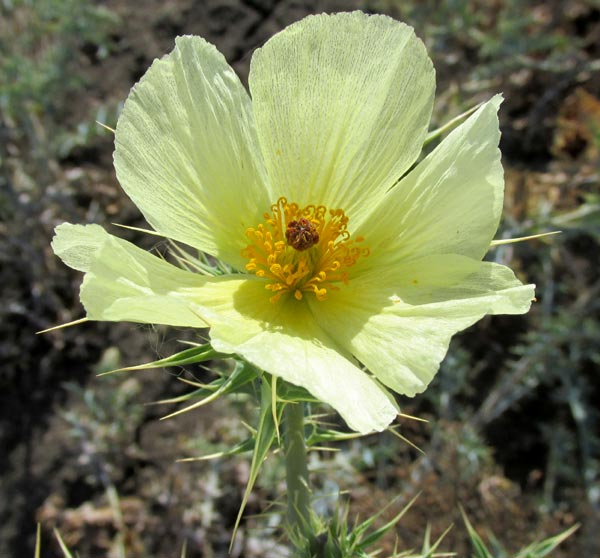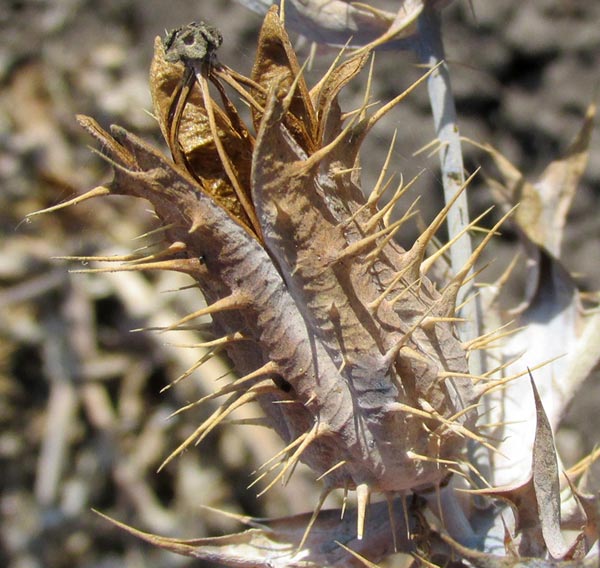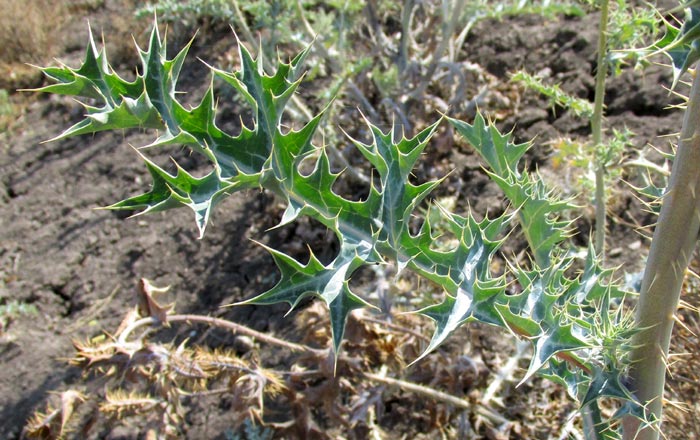Excerpts from Jim Conrad's
Naturalist Newsletter
entry dated February 19, 2022 issued from near Tequisquiapan, elevation about 1,900m (6200 ft), N20.565°, W99.890°, Querétaro state, MÉXICO

PALE MEXICAN PRICKLYPOPPY
Here during the heart of the dry season, with most of the rural landscape dried up and monotonously brown/gray, weedy gatherings of green-leafed weeds such as the above look pretty good. With the large flowers and fruiting pods, and very spiny vegetative parts, most of us recognize this as a kind of pricklypoppy. However, about 32 species of pricklypoppy, genus Argemone, of the Poppy Family, the Papaveraceae, are recognized, all native to the Americas and Hawaii, though several species are invasive in other parts of the world. The Flora del Bajío, which covers Querétaro and a few nearby states in upland central Mexico, reports six species in our region, so which species is the one above?
Though viewing the flowers from the side in bright light, as shown above, the flowers at a distance look white, up close and from above the corolla you see a definite yellow hue, as shown below:

Often the pricklypoppy species are divided into those bearing either white or yellow flowers. This species usually is grouped with the yellow-blossomed ones, despite the paleness of the yellowness.

Among pricklypoppies, the shape and spininess of the ovary and developing fruit-pod are important identification features. In the above photo, the two ovaries below the flower are oblong, and generously armored with fairly long spines.

This species' mature, pod-type fruit is similarly oblong and spiny. The above photo shows the pod splitting along five sutures, with the blossom's old, dried up and blackened stigma now crowning the whole structure. If a good gust of wind should shake the plant, seeds might tumble from the pod.

Finally, above you see the leaf's spiny margins.
All these features considered together bring us to the aptly named Pale Mexican Pricklypoppy, ARGEMONE OCHROLEUCA, native just to arid, upland northern and central Mexico, though it's invasive in much of the world, including the arid US south. Here it's a very common weed along roads and out in fields lying fallow during the dry season. In most fields the only conspicuous greenness is this pricklypoppy and the Dyer's Rocket, Reseda luteola.
Being a member of the Poppy Family, and issuing a brightly orange latex when injured, you might guess that traditionally the plant has been used medicinally. The orange latex has been used to remove spots and fleshy growths from the eyes, and the flowers have been mushed into a plaster applied to the skin to cure scabies. Other reported uses have been to cure the cough, rage, and various nervous disorders, plus an oil derived from the seeds has been used as an insecticide and for the making of soap.